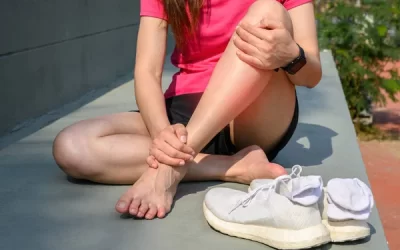Who would have ever thought isolating workers out of their offices would have lasted as long as it has? While many workers have returned to their offices, some will be asked to continue to work from home indefinitely or at least part-time. While workers were sent home to protect them and others from Covid-19, people were forced to create home office set ups. Although initially, people thought this home office arrangement might last weeks to a couple months, it now has been 2 years for some people. Home work stations were often temporary at a kitchen or dining room table and others found themselves contorting their bodies on their couches with a laptop on their lap.
Significant time and expense was spent by employers designing and modifying office work stations for proper sitting and/or standing ergonomics. Most people initially did not consider this when selecting a space in their home where they could spread out their papers next to a computer. Unless people spent quite a bit of time previously working at their desk, the ergonomics were probably not considered and often a spare chair was positioned at the desk that was used for other purposes.
The physical stress and strain on muscles, ligaments and joints of the neck, middle and lower back with prolonged sitting in an incorrect posture will sooner or later result in pain. This principle can be easily demonstrated and understood by gently bending a finger backward to its end available range of motion. This does not hurt right away but if that position was held for 1-2 hours before releasing the stretch, the finger would probably begin to hurt. Now consider doing it for a full work day with some breaks.
Some helpful hints for a proper home work station are:
- If sitting at a desk, the chair’s armrests (if present) should slide under the desk top. This allows the worker to sit all the way back in the chair then slide the chair forward. Consider using a lumbar roll positioned right above the belt line. The best set up would have elbows bent at 90 degrees, wrists on a soft wrist rest and the computer monitor at eye level. Place a small step stool or stack a couple of old telephone books for feet to rest on if they do not sit flat on the ground.
- Laptops are very difficult to position for great sitting ergonomics. If one has to be used for prolonged time periods, consider a detached keyboard or the monitor will not be able to be positioned at eye level. If the detached keyboard is not an easy option, take a 3 inch high three ring binder and position it so it slopes back to front on the desk. The keyboard will be sloped towards the worker and take some time to adjust to the position but the monitor will be closer to eye level.
- Stand up desks have gained popularity over the last 5+ years as a welcomed change of body position. Many are desk top models with a side release so it can be used sitting or standing. These can be found for <$150 on the internet. To mimic this at home, people could also set up at an elevated counter top. When standing, place a small step stool that can be used to alternate placing a foot on it to promote standing up straight without having to think about it.
Hopefully, the above tips will make working from home less painful on the neck and back. If you would like more specific advice for your particular home work station, please feel free to call us before going out and spending hundreds of dollars for something that may not be the best solution. Our physical therapists at Optimal Physical Therapy and Sports Performance are ergonomic specialists and have worked with clients successfully for many years. See why we have been voted Best Physical Therapy by the Cranberry Eagle Readers for the last 10 years!



